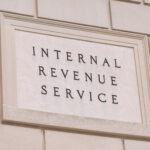
President Biden recently signed the SECURE 2.0 Act into law. This legislation has been highly anticipated by employers who offer retirement plans to their employees. The SECURE Act 2.0 aims to significantly improve how employees can save for their futures.
Some of the key takeaways from the SECURE 2.0 Act:
- Gives employees earning under $150,000 starting in 2023 access to emergency funds
- Allows companies to automatically enroll employees in emergency savings accounts, at 3% of pay for a maximum of $2,500, that they could access at least once a month
- Allows employees to withdraw up to $1,000 from their 401(k) or IRA per year without having to pay the typical 10% tax penalty starting in 2024
- Increases the amounts for catch-up contributions that individuals age 50 or older can invest,
- The amount will be increased to $10,000 from the current $7,500 starting in 2025 for those ages 60-63
- Indexes the allowed IRA catch-up contributions to inflation
- For higher-earning employees, those making $145,000 or more, all catch-up contributions are subject to Roth tax treatment beginning in 2024
- Allows employers to make matching contributions on behalf of employees who are still repaying student loans, even if they are not contributing to their 401(k)
- Allows employer matching contributions to be designated as Roth contributions. Similar to other Roth contributions, employees will pay taxes on their Roth match up front and be able to take it out tax-free in retirement
- Eliminates minimum required distributions for Roth 401(k)s
- Allows part-time employees to qualify for their company’s 401(k) earlier
- Makes it easier for employers to make contributions to 401(k) plans on behalf of employees
- Raises the required minimum distribution (RMD) requirement to start at age 75 from the current age 72. The age will increase gradually from 73 in 2023 to 75 in 2033
- Reduces the penalty for failing to take RMDs to 25%, and if taken by the end of the next year, 10%, from the current 50%
- Requires employers to provide automatic enrollment features in their plan and auto escalation annually for employers starting new retirement plans in 2025 or after. The enrollment will start at 3%, increasing 1% annually and will not exceed 10%
- Creates a national lost-and-found registry for 401(k)s providing a source to find where employees’ money may be sitting from a previous employer
This extensive list of changes aim to empower individuals to reach savings goals and provide more flexibility upon retirement.
Corrigan Krause Can Help
Navigating the changes new legislation brings can be a challenge. Feel free to reach out at info@corrigankrause.com with inquiries and questions.

